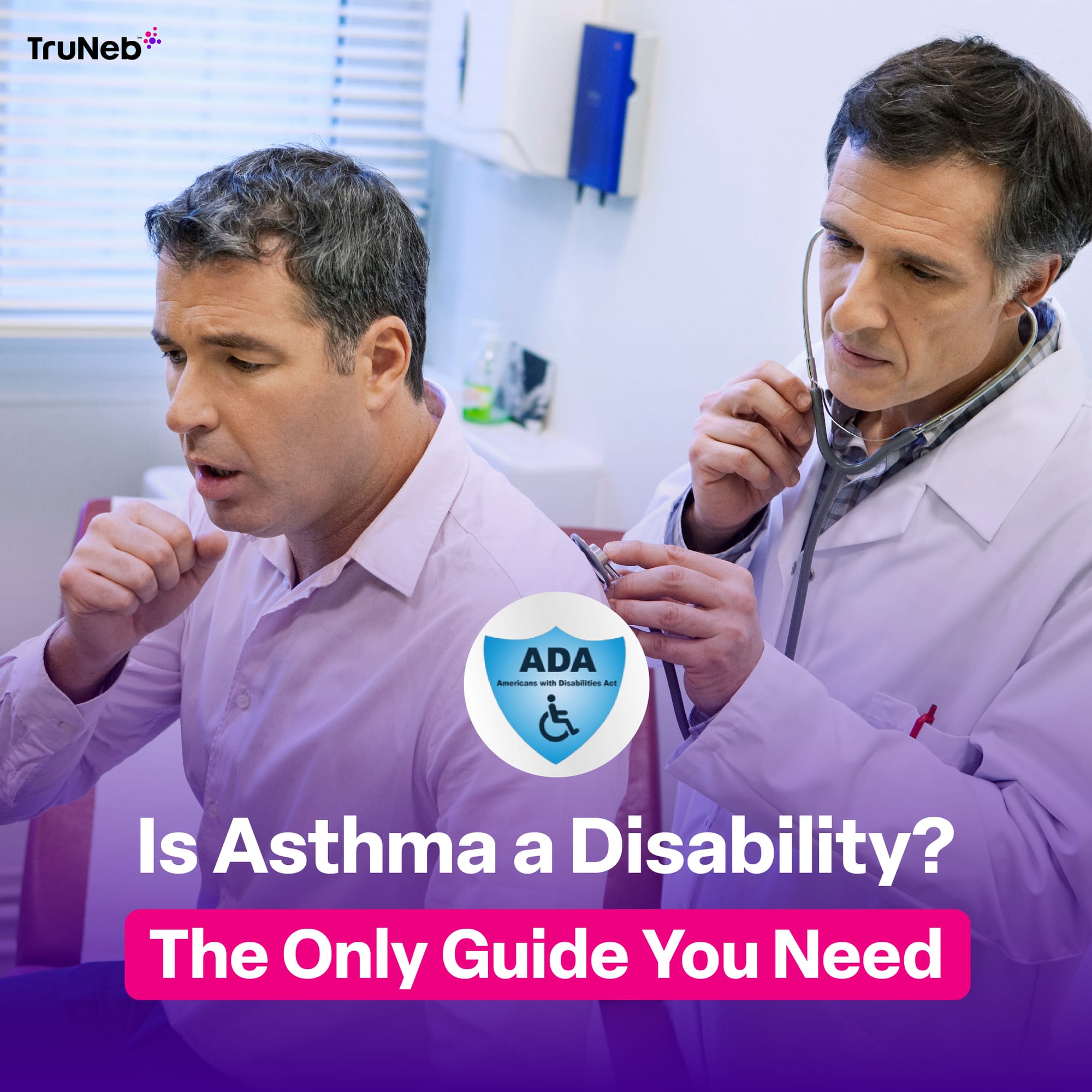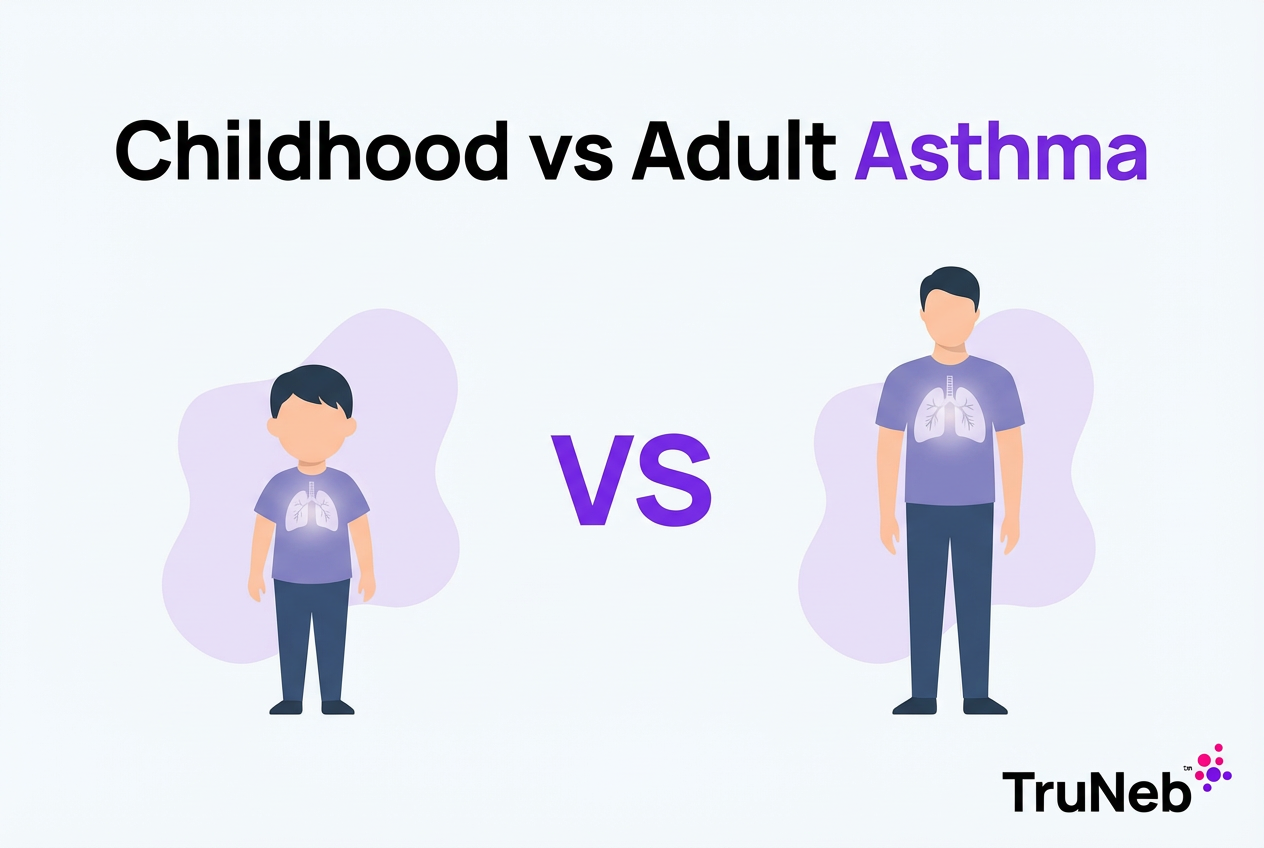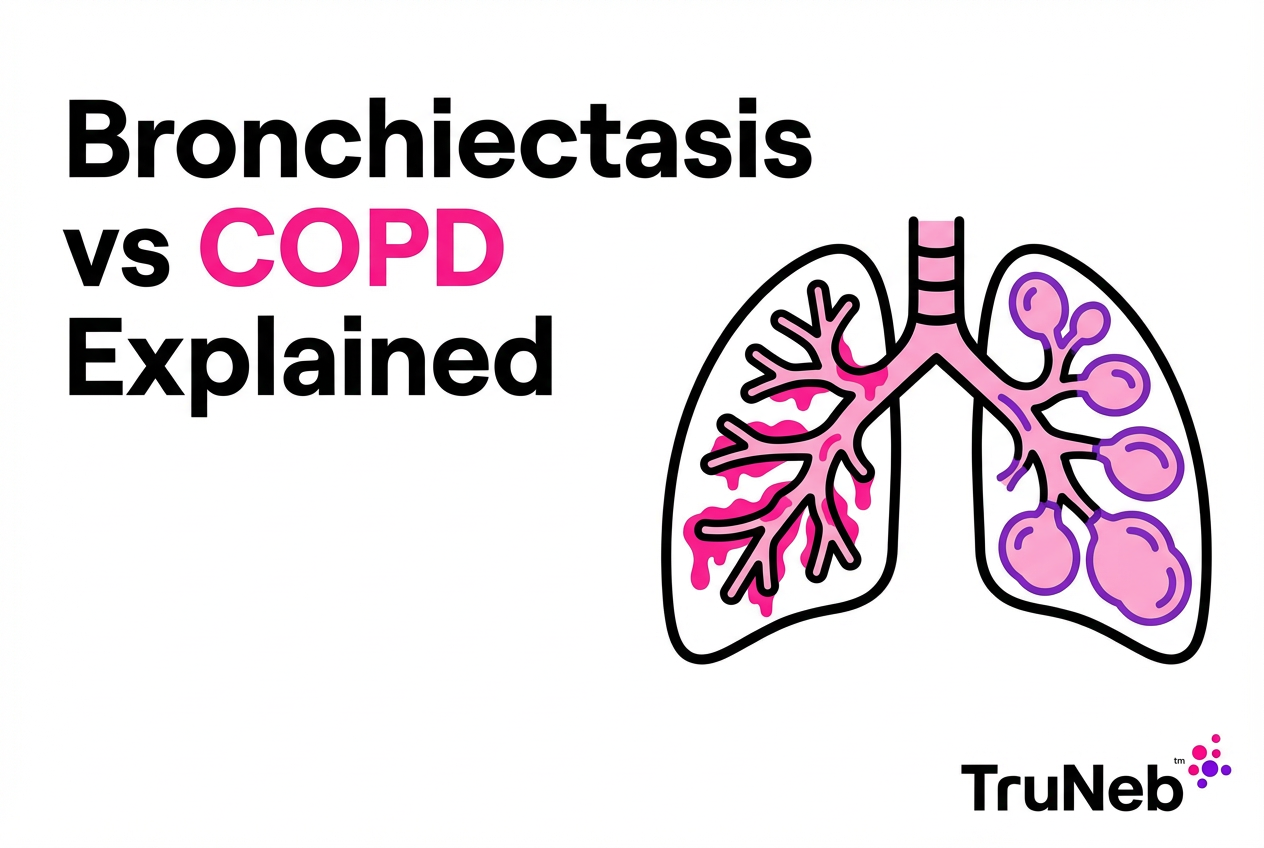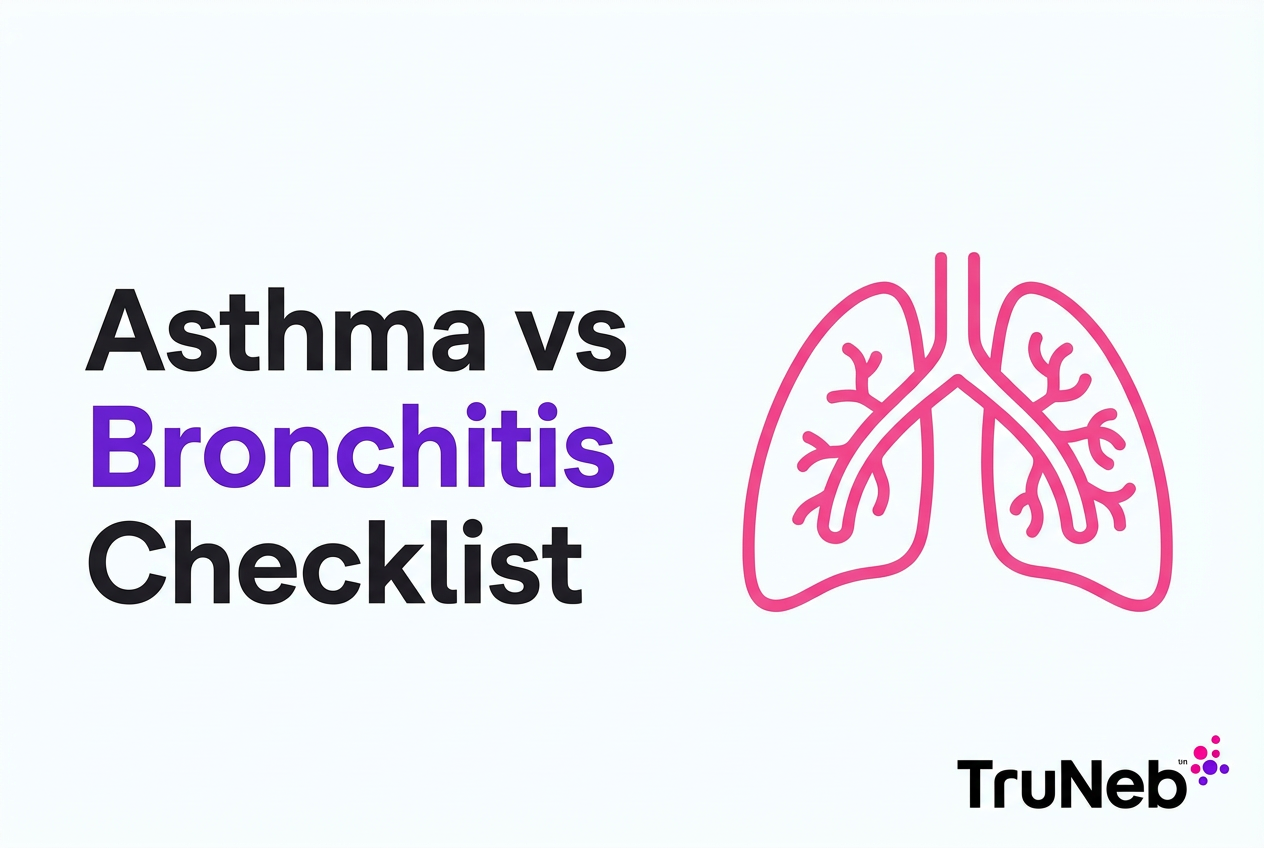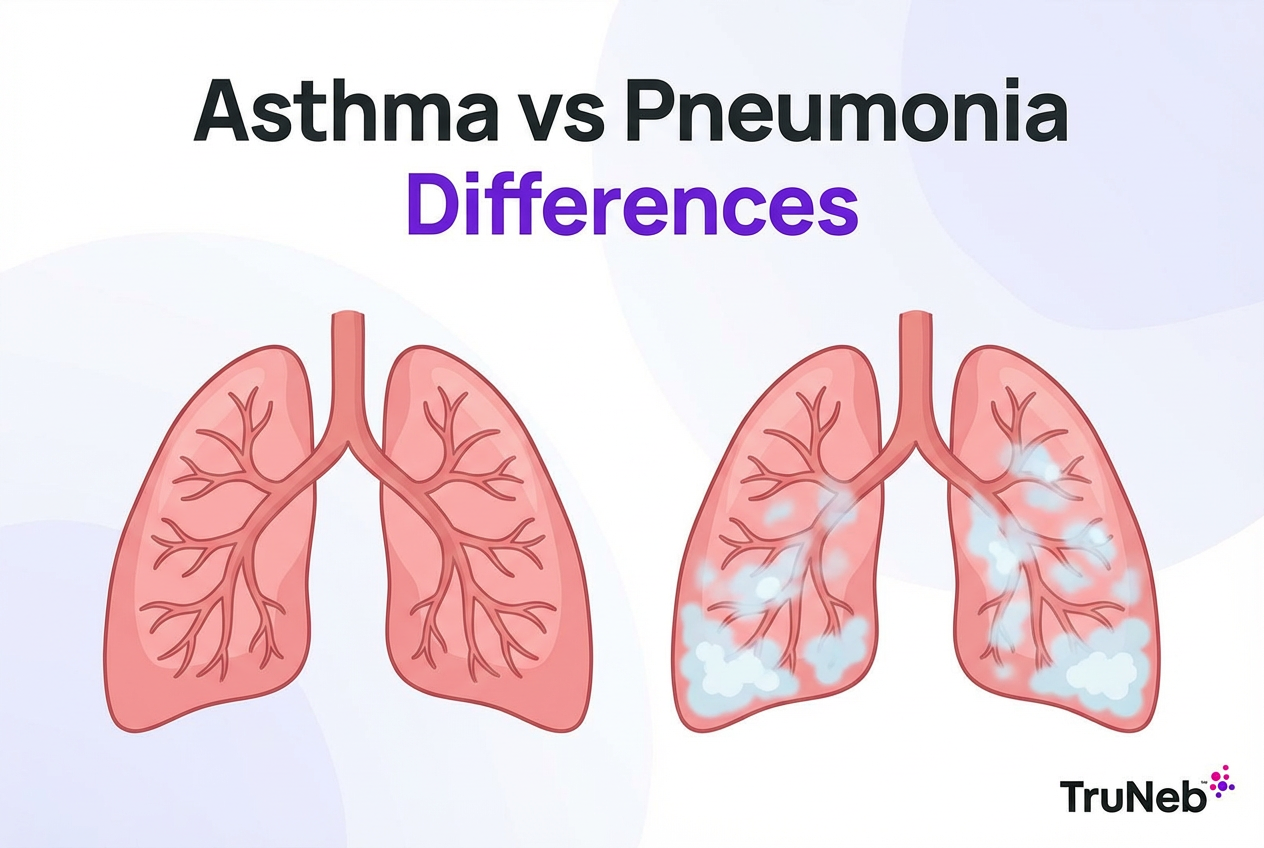On this page
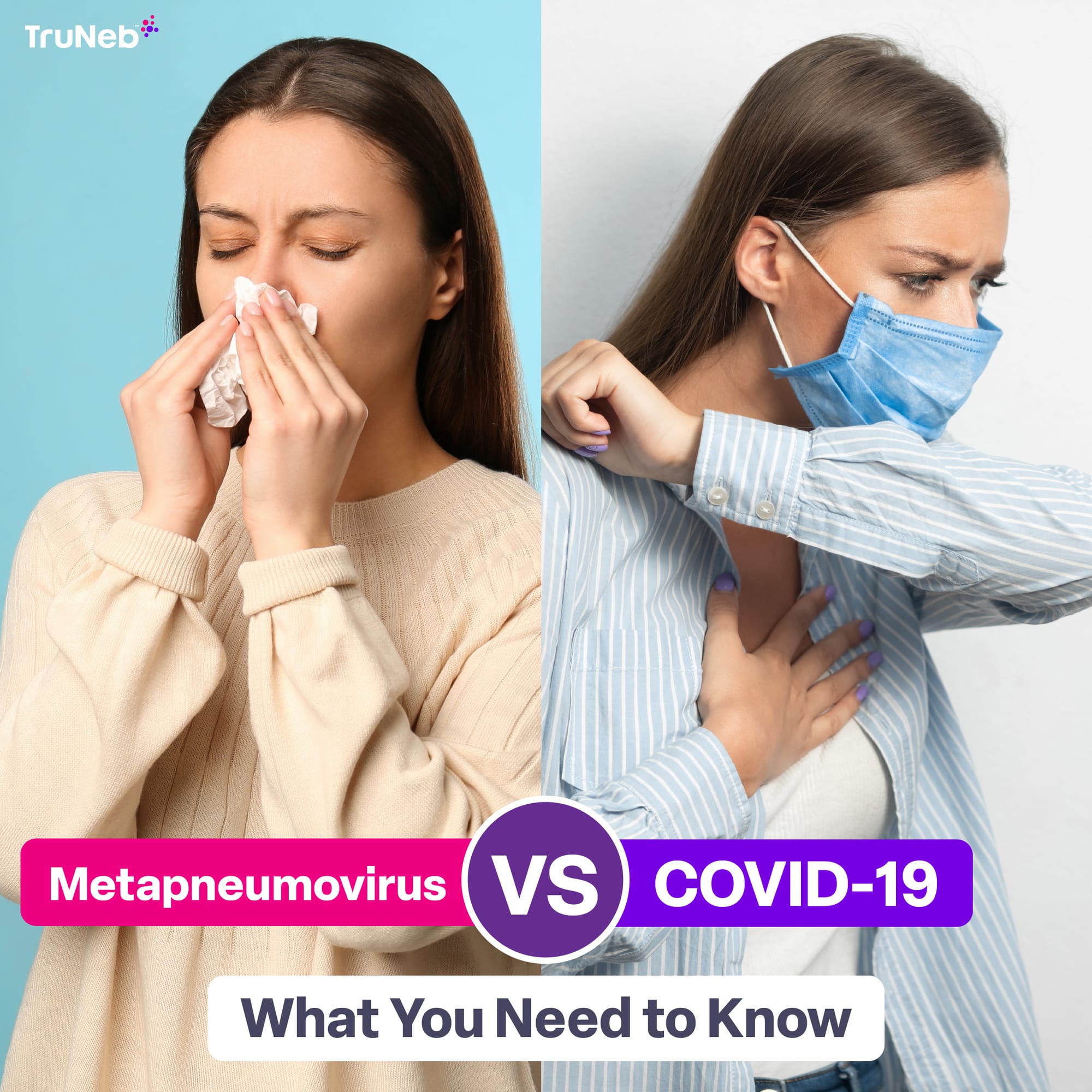
With the recent outbreak of Human Metapneumovirus in China, understandably people are on edge.
Respiratory illnesses are always a hot topic, especially in recent years with the spotlight on COVID-19. You may have heard of another virus getting more attention lately. Meet human metapneumovirus (HMPV). While it doesn’t get the same headlines as COVID-19, HMPV can cause serious respiratory issues, especially for certain at-risk groups.
Understanding how these two viruses compare is key—not just for your own peace of mind but also for managing symptoms and knowing when to seek care.
Here’s the tricky part: both HMPV and COVID-19 cause symptoms like fever, cough, and difficulty breathing. For many people, this makes it tough to tell them apart. The good news? While their symptoms overlap, their severity, treatment options, and risk factors can be quite different. Let’s dive into the details of Human Metapneumovirus vs. COVID-19 to help you stay informed.
What is Human Metapneumovirus (HMPV)?
HMPV isn’t a new player in the world of respiratory viruses. Discovered in 2001, this virus belongs to the same family as respiratory syncytial virus (RSV). But researchers believe it’s been around much longer–possibly since the 1950s!
HMPV is a leading cause of respiratory infections worldwide, yet it doesn’t get as much attention as its viral cousins. That’s starting to change, though, as experts learn more about its impact and how it behaves in different populations.
Human Metapneumovirus Symptoms
If you’ve had a cold, many HMPV symptoms might feel familiar. These include:
- Fever
- Cough
- Nasal congestion
- Shortness of breath
- Wheezing (especially in severe cases)
For most healthy individuals, HMPV runs its course without major complications. But for the very young, the elderly, or those with weakened immune systems, it can escalate into more serious conditions like pneumonia or bronchitis.
How Long Does it Take to Recover from Human Metapneumovirus?
For most people, HMPV clears up within 7 to 14 days. Recovery tends to be straightforward, though a lingering cough or fatigue isn’t uncommon.
For kids and at-risk groups, the timeline can stretch a bit longer, especially if complications like pneumonia arise. The focus should always be on supportive care—staying hydrated, managing symptoms, and seeking medical care if breathing becomes difficult.
How Long Are You Contagious with Human Metapneumovirus?
HMPV is contagious for 3 to 8 days, typically during the peak of symptoms. People with weaker immune systems or more severe infections can spread the virus for much longer.
Good hygiene habits, like frequent handwashing and disinfecting surfaces, can go a long way in preventing the spread to others.
Human Metapneumovirus in Kids
HMPV often shows up in kids under five, causing symptoms that range from mild to severe. Some children experience nothing more than a runny nose and low-grade fever, while others might develop wheezing or difficulty breathing.
Parents should keep a close eye on symptoms. If your child is struggling to breathe, showing signs of dehydration, or not improving, it’s time to call the doctor. Early intervention can prevent more serious outcomes like hospitalization.
How HMPV Spreads
HMPV spreads in much the same way as other respiratory viruses:
- Through respiratory droplets from coughs or sneezes.
- By touching contaminated surfaces and then touching your eyes, nose, or mouth.
- Through close contact with infected individuals.
The incubation period for HMPV is typically 3–6 days, and people are most contagious during the peak of their symptoms.
What is COVID-19?
COVID-19 burst onto the global stage in late 2019, caused by the virus SARS-CoV-2. Since then, it has reshaped how we think about public health, hygiene, and respiratory illnesses. Though vaccines and treatments have improved outcomes, the virus continues to circulate and evolve, keeping it a top concern for doctors and researchers.
COVID-19 is known for its ability to cause severe complications in some people, while others may experience only mild symptoms or none at all.
Common Symptoms of COVID-19
COVID-19 symptoms can vary from mild to severe, making it challenging to pinpoint without testing. Some of the most common symptoms include:
- Fever or chills
- Cough
- Shortness of breath or difficulty breathing
- Fatigue
- Loss of taste or smell
- Headache, muscle aches, or sore throat
In more serious cases, it can lead to pneumonia, organ failure, or long-term complications known as “long COVID.” Risk factors for severe outcomes include older age, chronic conditions like heart or lung disease, and compromised immune systems.
How COVID-19 Spreads
COVID-19 spreads rapidly through:
- Respiratory droplets released when someone talks, coughs, or sneezes.
- Aerosols that can linger in poorly ventilated spaces.
- Contact with contaminated surfaces, though this is less common.
With multiple variants emerging, COVID-19 has shown an ability to adapt, requiring ongoing efforts like vaccination, mask-wearing, and improved ventilation to manage its spread.
HMPV vs. COVID-19: Key Differences and Similarities
Overlapping Symptoms and Spread
At first glance, HMPV and COVID-19 seem almost interchangeable. Both can cause fever, cough, and difficulty breathing, and they’re both spread through droplets and close contact. For a lot of people, this overlap adds to the confusion.
A few telltale signs can help distinguish between them. COVID-19 is more likely to cause a loss of taste or smell, while HMPV often leads to wheezing or more upper respiratory symptoms.
Severity and Complications
COVID-19 has a broader range of potential outcomes, from asymptomatic cases to severe, life-threatening illness. HMPV tends to stay confined to the respiratory system, though it can lead to pneumonia or bronchiolitis in vulnerable groups.
Another big difference? Treatments. COVID-19 now has vaccines and antivirals like Paxlovid to reduce severity. HMPV relies solely on symptom management and supportive care. At least for now.
Seasonality and Outbreaks
HMPV is more predictable, with most cases occurring during late winter and early spring. COVID-19, on the other hand, has shown year-round activity, with spikes often tied to new variants or changes in behavior like holiday gatherings.
Understanding these differences can help you better prepare, whether that means seeking medical care, using a nebulizer for breathing relief, or taking preventative measures to stay healthy.
HMPV vs COVID-19 Comparison
| Feature | HMPV | COVID-19 |
|---|---|---|
| Virus Family | Pneumoviridae | Coronaviridae |
| Common Symptoms | Fever, cough, nasal congestion, wheezing, shortness of breath | Fever, cough, fatigue, loss of taste/smell, shortness of breath |
| Risk Groups | Young children, older adults, weakened immune systems | Older adults, chronic conditions, weakened immune systems |
| Transmission | Respiratory droplets, contaminated surfaces | Respiratory droplets, aerosols, contaminated surfaces |
| Incubation Period | 3–6 days | 2–14 days |
| Recovery Time | 1–2 weeks | Varies; mild cases ~2 weeks, severe cases longer |
| Treatment | Symptom management (humidifiers, fluids, nebulizers) | Vaccines, antivirals (e.g., Paxlovid), symptom management |
| Seasonality | Late winter to early spring | Year-round |
| Prevention | Hygiene, masks, avoiding sick individuals | Vaccines, hygiene, masks, ventilation |
Diagnosing HMPV and COVID-19
With so many overlapping symptoms, it’s no surprise that diagnosing HMPV or COVID-19 can feel tricky. The fever, cough, and breathing difficulties seen in both illnesses make it hard to tell them apart without medical tests.
Adding to the complexity, HMPV often flies under the radar because it’s less well-known than COVID-19. Many cases go undiagnosed, with symptoms mistaken for a cold, flu, or another respiratory virus.
Diagnostic Tools and Testing
Thankfully, advancements in testing have made it easier for healthcare providers to differentiate these viruses.
- PCR Tests: Highly accurate and used to detect both HMPV and COVID-19.
- Rapid Antigen Tests: Common for COVID-19 but not as widely available for HMPV.
- Respiratory Panels: Multiplex PCR tests that can identify several viruses, including HMPV, in one go.
If you or your child are experiencing severe symptoms or symptoms that don’t improve with home care, a doctor might order these tests to pinpoint the cause. COVID tests are ready available off the shelf at your local drug store.
When to Seek Medical Help
Always watch for these red flags:
- Difficulty breathing or rapid, shallow breathing.
- A high fever that doesn’t respond to over-the-counter medications.
- Signs of dehydration, such as dry mouth or reduced urine output.
- Symptoms that seem to improve but then worsen.
Trust your instincts—if something feels off, get medical advice immediately.
Treatment and Recovery
For most cases of HMPV, the focus is on relieving symptoms and staying comfortable. Here are a few things that may help:
- Use a cool mist humidifier to soothe irritated airways.
- Keep hydrated with plenty of fluids.
- Use a nebulizer or inhaler to ease wheezing or shortness of breath.
In severe cases, hospitalization might be necessary, especially for young children, older adults, or those with weakened immune systems. Treatments might include oxygen therapy or IV fluids.
Treating COVID-19
COVID-19 treatment varies depending on the severity of the illness:
- Mild Cases: Rest, hydration, and over-the-counter medications to manage fever and pain.
- Moderate to Severe Cases: Antiviral medications like Paxlovid or monoclonal antibody therapy.
- Critical Cases: Hospital care may involve oxygen, ventilators, or other intensive treatments.
Recovery times differ. While most people recover from HMPV in about a week, COVID-19 can take longer, especially for those who develop long COVID.
Prevention Tips for HMPV and COVID-19
The best way to stay ahead of both viruses is to focus on hygiene:
- Wash your hands regularly with soap and water.
- Avoid touching your face, especially your eyes, nose, and mouth.
- Clean and disinfect frequently touched surfaces like doorknobs and phones.
Protective Measures
- Wear masks in crowded or poorly ventilated spaces.
- Practice social distancing when respiratory viruses are spreading.
- Keep your immune system strong with good nutrition, adequate sleep, and regular exercise.
Seasonal Awareness
HMPV often spikes during the winter and spring, while COVID-19 can flare up at any time. Stay alert to local health updates and adjust your precautions based on the season and current trends.
By focusing on prevention and early detection, you can reduce your risk of both viruses.
How Nebulizers Help with HMPV and COVID-19 Symptoms
Managing symptoms effectively makes all the difference. Nebulizers can be a part of that treatment plan . These devices turn liquid medication into a fine mist that’s easy to inhale, delivering relief directly to the lungs.
Nebulizers can help alleviate wheezing and open up airways, making breathing easier. While they don’t treat the virus itself, they provide a quick, effective way to manage symptoms like bronchospasms or shortness of breath.
The ultimate name in convenience: TruNeb™
TruNeb’s portable nebulizer is designed with convenience and ease of use in mind. It’s lightweight, quiet, and perfect for both kids and adults. Whether you’re managing chronic respiratory conditions or looking for relief from an acute illness, TruNeb helps you take control of your health with minimal hassle.
HMPV vs. COVID-19: Key Takeaways
Both HMPV and COVID-19 can cause respiratory illnesses that range from mild to severe. While their symptoms overlap, understanding their differences—like transmission, severity, and treatment options—can help you take the right steps for care.
Here’s what to remember:
- HMPV: Often seen in younger children and older adults, with symptoms like wheezing and bronchitis. Managed with supportive care, including nebulizers for breathing relief.
- COVID-19: Affects every age group, with more potential for severe complications. Vaccines and antivirals are key tools in prevention and treatment.
As always, seek advice from a licensed medical provider if you start experiencing symptoms of respiratory illness.
TruNeb is here to help manage symptoms effectively with convenient nebulizers you can easily take anywhere. No bulky air compressors, no tubing required.
Explore TruNeb™ now→


